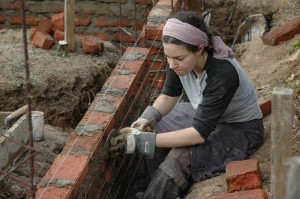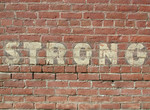I decided long ago, when my daughter was in high school and my son was in middle school, that there is no “right way” to parent. I am writing this on the heels of Father’s Day. I got phone calls from each of my two “kids” who are a thousand miles away and dealing with all the joys and frustrations of young adulthood. I had time on Sunday to think about my still-changing role as their father.
I started out as a father assuming that some firm and clear rules about parenting would serve me well. That’s how it looked as I observed my father through a child’s eyes. I figured that as a father, the rules about consistency, discipline, good communication, and other such principles would just come to me, I would apply them and then enjoy my children. Then I became a father. Fatherhood has an ever-changing job description, and you can glance in any direction and find exceptions to any parenting rule.
As a therapist I saw college students who had every reason to be colossally screwed up but who instead were ahead of their peers in almost any positive quality you can think of. On the other hand, I saw others who grew up in model environments who seemed determined to make a mess of everything they could.
Of course, I saw these students only for a short time. I got only a snapshot of their lives. I don’t know which ones later on flew apart, got it together, flourished, or gave up. With parenting as with therapy, you never know how things will turn out.
Working for a bricklayer the summer after my senior year in high school, I learned some things about parenting, though I did not recognize them until years later. It was my job that summer of 1967 to keep the crew of bricklayers supplied with bricks and mortar throughout the day. The work was hard, hot, and dirty, but I was fascinated with what I observed and heard. There was crudeness and a precision to their work, a blending of attention and inattention, of focusing on details while not losing sight of the big picture. What occupied most of the bricklayer’s time was a series of steps, repeated brick after brick, row after row. The experienced bricklayer could make these steps look easy, even artistic, giving each brick just enough attention to make sure it was laid properly, but not so much attention that the work was slowed down.
 Each brick was laid to line up with a horizontal string that ran from one end of the wall to the other. This string was tied to two vertical 2X4s, one carefully and precisely positioned at each end of the wall. These 2X4s provided the standard for keeping the wall perpendicular, and the string provided the standard for keeping the row horizontal. As long as the standards were set properly, the workers were able to work rapidly while carrying on leisurely conversations with each other, giving just enough attention to the work so that each brick was laid according to the string. At certain places in their work, the workers would stop and consult the blueprints and, when needed, would reset the string and 2X4 standards.
Each brick was laid to line up with a horizontal string that ran from one end of the wall to the other. This string was tied to two vertical 2X4s, one carefully and precisely positioned at each end of the wall. These 2X4s provided the standard for keeping the wall perpendicular, and the string provided the standard for keeping the row horizontal. As long as the standards were set properly, the workers were able to work rapidly while carrying on leisurely conversations with each other, giving just enough attention to the work so that each brick was laid according to the string. At certain places in their work, the workers would stop and consult the blueprints and, when needed, would reset the string and 2X4 standards.
Each brick is important. It is essential to the integrity of the wall and ultimately to the building that each brick is solidly in place.
I think of moments with my children, whether they are toddlers, teenagers, or adults, as bricks in the wall. I cannot predict whether they will face hurricane force winds or a land-clearing flood, but I can do my best to make sure each brick gets sufficient attention to be placed solidly. And then I hope for best, that they can withstand what comes their way.

0 Comments until now
Add your Comment!